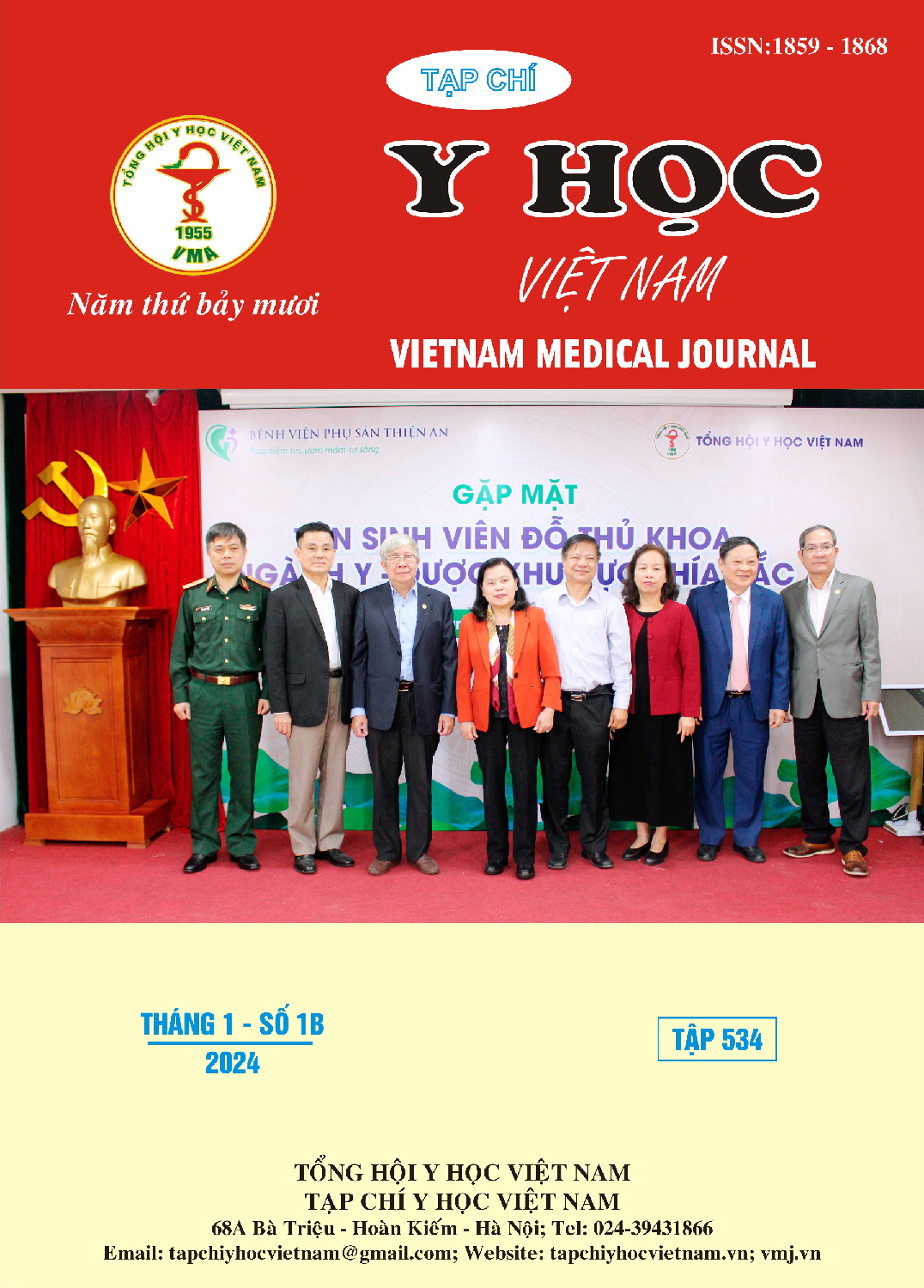RESULTS OF TREATMENT OF CLOSED FRACTURES OF DISTAL FEMORAL USING A LOCKING PLATE IN ADULTS AT BAI CHAY HOSPITAL
Main Article Content
Abstract
Background: Distal femoral fracture is a large fracture, near the knee joint, often greatly affecting the range of motion of the joint. Currently, locking splints are a commonly used means of firmly immobilizing fractures after reduction, creating favorable conditions for patients to recover function early after surgery. Research objective: Evaluate the results of bone fusion surgery with screws to treat closed femoral head fractures in adults at Bai Chay Hospital. Subjects and research methods: cross-sectional description combined with retrospective and prospective studies on 33 patients who underwent surgery with locking splints to treat closed fractures of the lower end of the femur type A and C according to the AO classification at Bai Hospital. Fire from January 2019 to October 2023. Results: The average age of the study patient group was 54.94 ± 20.99 years old (range 18 - 90 years old), male/female ratio: 12/21. According to the AO/ASIF classification, type A fractures of the lower end of the femur have 22/33 patients (66.7%), type C fractures have 11/33 patients (33.3%). Most patients had surgery in the first week, 18/33 patients (54.5%) had surgery from day 3 to 7, only 4/33 patients (12.1%) had surgery from day 3 to 7. 8th post-injury need to monitor and treat life-threatening injuries. Recent results: 100% of patients healed from the first surgical wound, no case of superficial surgical wound infection; The average hospital stay of patients is 14.97 ± 6.13 days; Orthopedic results after bone fusion surgery: 27/33 patients (81.8%) achieved very good results, 3/33 patients achieved good results (9.1%) and 3/33 patients achieved average results. (9.1%), no poor results. Long-term results: 100% of patients had bone healing after 6 months, no patients had bone non-union (pseudoarthrosis). Rehabilitation results according to Sander. R achieved good to very good results in 27/33 patients, 4/33 patients (12.1%) had average results and 2/33 patients (6.1%) had poor results. Conclusion: Treatment of closed distal femoral fractures with a locking plate brings positive results, suitable for type A and C distal femoral fractures according to the AO classification.
Article Details
References
2. W. K. Kolmert L (1982). “Epidemiology and treatment of distal femoral fractures in adults,” Acta Orthop Scand, p. 53:957–962, 1982.
3. Dang K H (2019). “Outcomes of distal femur fractures treated with the Synthes 4.5 mm VA-LCP Curved Condylar Plate,” Int Orthop, pp. 1709-1714, 2019.
4. Martinet O (2000). “The epidemiology of fractures of the distal femur,” Injury, pp. C62-63, 2000.
5. Saini R A (2018). “Functional outcome of distal femoral fractures treated with DF-LCP [Distal femur locking compression plate],” International Journal of Orthopaedics Sciences, pp. 439-444, 2018.
6. Trần Chí Khôi (2014). “Điều trị gãy đầu dưới xương đùi bằng nẹp vít khóa với kĩ thuật ít xâm lấn,” Luận Văn Bác sĩ chuyên khoa cấp II, Trường Đại học Y khoa Phạm Ngọc Thạch, 2014.
7. Hoàng Ngọc Minh (2020). “Nghiên cứu khả năng cố định ổ gãy trên thực nghiệm và kết quả điều trị gãy kín đầu dưới xương đùi người lớn bằng nẹp khóa,” Luận án Tiến sĩ y học, Học Viên Quân Y, 2020.


